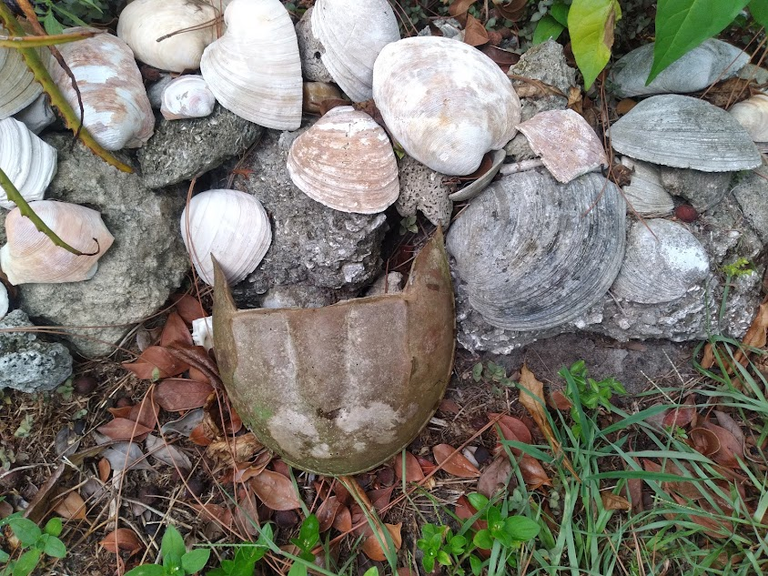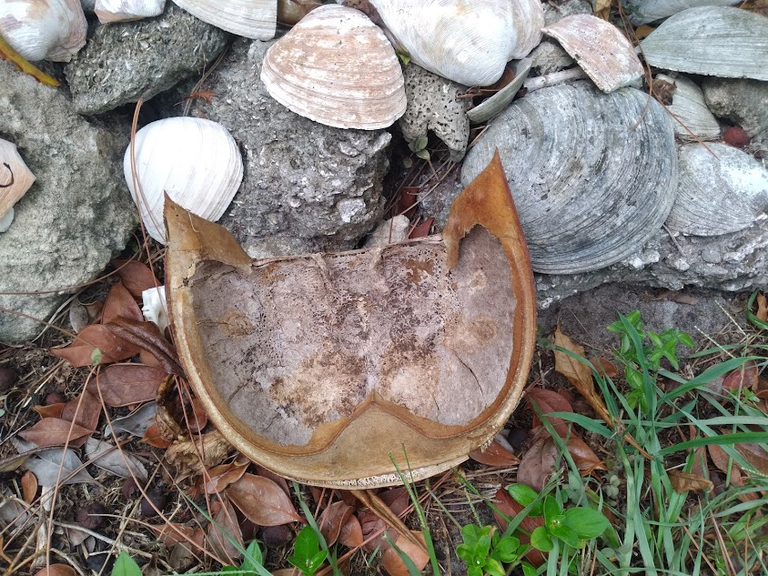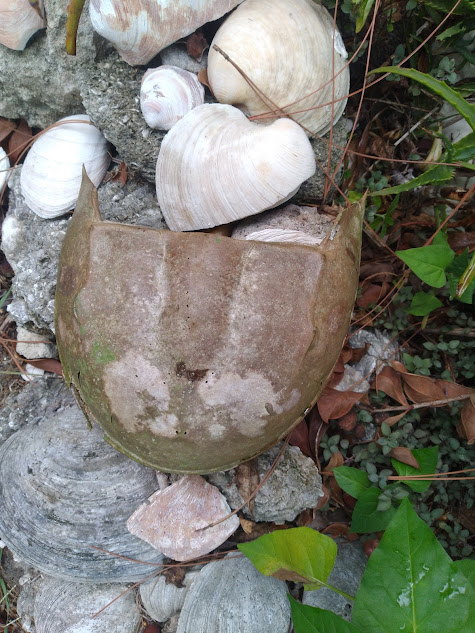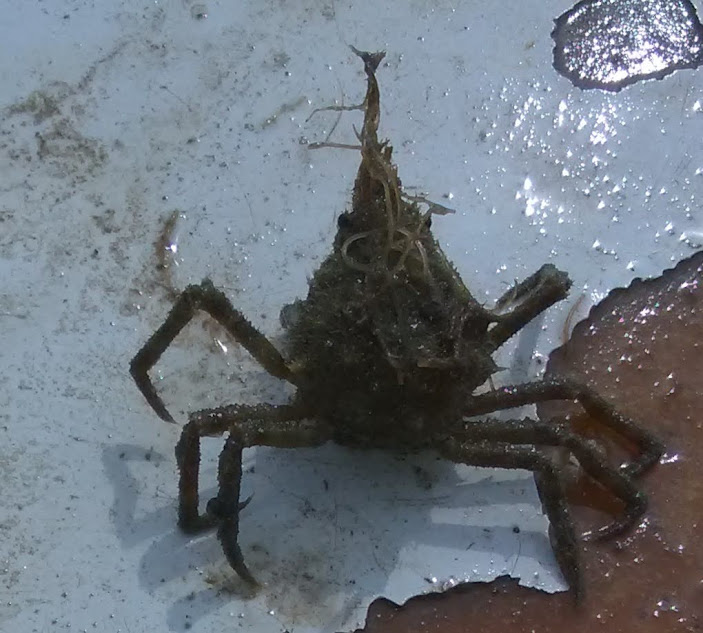5 minute freewrite 2836 prompt horseshoe

This is my post for #freewriters prompt horseshoe hosted by @mariannewest.
You would think that since I take a photo of everything, I would have a photo of a horseshoe crab, but I don't. Then I remembered that years ago, one of my grandkids picked up a part of ones shell on the river shoreline and brought it here and I put it in my flower bed.

Without its tail and flapper part, it resembles a horseshoe.
The AIS Indians ate hermit crabs, I would bet that if these are edible, they ate horseshoe crabs, too. I googled it, and they say there is no evidence that the Ais ate them, but other tribes did eat them, so they assume the Ais would have eaten them. People nowadays do not eat the meat, they only eat the roe, (eggs).
When I was a kid during mating season, the horseshoe crabs would be lined up on the shoreline, one on top of the other. They were so thick you could not walk through them. When they laid their eggs, the shore would be filled with birds that were eating the eggs.

Horseshoe crabs not only have a protective shell, but they also have ten eyes. One is on its tail, seven smaller eyes are across the top of its shell, and it has two bigger eyes, one on each side of its shell.
They have a lot of legs, their legs always freaked me out when I picked one up. They have ten legs, it looks like more than that to me. They say these ten legs are in five pairs, the first ones are used for eating. The other four pairs are its walking and digging legs.
I knew their blood was blue, and it was used in the medical field, but I did not know for what. It will clot in the presence of endotoxins, which are the toxic substances produced by bacteria. By their blood clotting, the scientists can remove toxins from vaccines, drugs, and medical devices. They have an 85 to 90% survival rate after bleeding. After bleeding, they are returned to the ocean, but there are concerns about, health and spawning after they have been bled.

Like horseshoe crabs, spider crabs have not changed in size since roaming with the dinosaurs.
While some fossilized horseshoe crabs have been found that are larger than modern individuals, the general body plan and size of horseshoe crabs have remained relatively consistent for hundreds of millions of years. They are considered "living fossils" because they have changed so little over vast stretches of geological time.
Jurassic Period:
Fossils from the Jurassic period (around 148 million years ago), when dinosaurs were thriving, show horseshoe crabs that are virtually identical in shape and size to modern ones.
Ancient Lineage:
Horseshoe crabs predate the dinosaurs by hundreds of millions of years, having first appeared in the fossil record around 445 million years ago.
Evolutionary Stability:
Their survival through mass extinctions and other major environmental changes suggests a degree of evolutionary stability, including a relatively consistent body size and shape.
photos are mine
More about horseshoe crabs than I ever knew -- thanks!
I even learned a couple of things that I did not know, like its eyes and only ten legs.
I certainly learned a great deal from this post. All those eyes...and in so many places! And all those legs! Sounds a little bit creepy.
I have picked up and looked at them all of my life, and I did not know they had that many eyes.
It would be nice to have all of those eyes, especially the one on its tail, so that it can see what is coming from behind.
What a sight! As a child you saw this: during mating season, the horseshoe crabs would be lined up on the shoreline, one on top of the other. They were so thick you could not walk through them. When they laid their eggs, the shore would be filled with birds that were eating the eggs.
This is something @owasco quite likely already knows, but it's news to me: the crab's blood is used in the medical industry. After scientists harvest some of their blood, the crabs are returned to the ocean, but not all will survive the "bleeding."
Thanks for the photos and all the information!
Seeing horseshoe crabs was nothing unusual even now, but we do not see as many. I have never known anyone selling or buying them, so I do not think they buy them for their blood in my area.
@myjob, I paid out 0.057 HIVE and 0.010 HBD to reward 3 comments in this discussion thread.